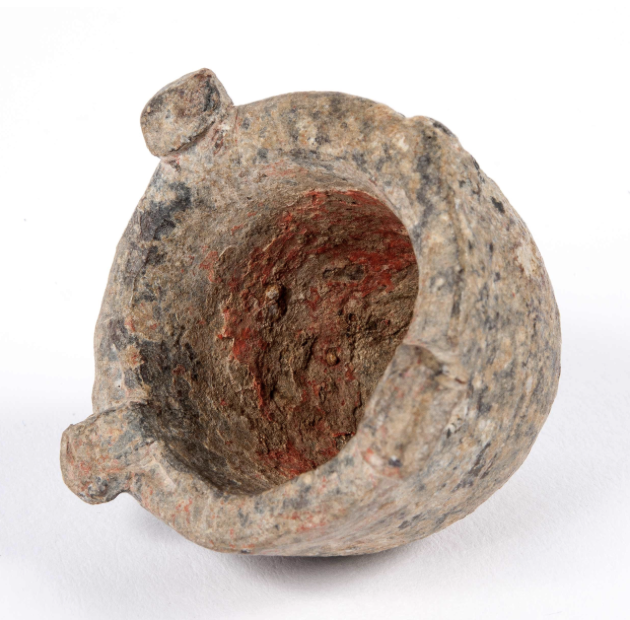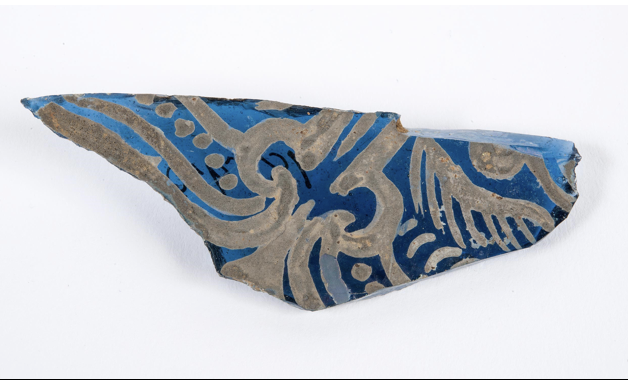Below you will find our proposal outline for the virtual exhibition:
Topic for research
Textile, linen, Bayeux Tapestry, Hastings, England, Battle of Hastings, 1066, battle dress, daily life at the time, 11th century – 13th century.

Short Description
Our virtual exhibit will focus on a linen tapestry of the Battle of Hastings in 1066, titled the Bayeux Tapestry. We’ll illustrate the use of linen, military/battle wear and life during this period. Our timeline will span from the 11th to 13th century, capturing a unique and influential time in history through the analysis of the famous tapestry.
Intended Audience
Our exhibition is for adult members of the public who are interested in archaeology and history. Though we are not gearing our product towards children or teenagers, we do not expect to include any mature or graphic content that would make it unsuitable for them.
Sub-sections of exhibition
- An overview of linen origin, production, use.
- In both the Middle Ages (11th century-13th century) and present day.
- To look at its use for clothing as well as bedding etc.
- Looking at how hygiene and clothing interact during the Middle Ages
- A summary of the Battle of Hastings (1066).
- With archaeological and historical evidence
- A section that examines the linen tapestry and information it provides.
- Looking at the information provided about the use of weaponry in the tapestry
- Looking at information inferred from the Tapestry about architecture and settlement design
- A section on the clothing during the Battle of Hastings.
- As depicted in the tapestry
- As it relates to earlier discussions of textile
Image sources

Annotated Bibliography
Haslam, J. (2021). The Settlement and Landscape Context of the Battle of Hastings. Medieval Archaeology, 65(1), 126–150. https://doi.org/10.1080/00766097.2021.1925007
This article goes into detail about Hastings, England, and its appearance and existence right before the battle took place. Haslam analyses the Bayeux Tapestry to discuss the architecture of the town, and uses topographical evidence to explain Hastings’ surroundings. This article is of use for our project because of its analysis and discussion of the Bayeux Tapestry, which will enrich our section about what can be learned from the artifact.
North, S. (2020). Sweet and clean? : bodies and clothes in early modern England (First Edition.). Oxford University Press.
This book provides an overview of hygiene and etiquette during Medieval England. North specifies clothing and the use of linen underwear as material culture that is studied to assess his research questions. The outline provides a summary of the effects of clothing and their interaction with disease and hygiene during this period. We’ll utilize the following chapters that illustrate detailed analysis on the production and use of linen. This will help provide an overview for our understanding of the textile and its many uses during the Middle Ages.
Norton, C. (2019). Viewing the Bayeux Tapestry, Now and Then. Journal of the British Archaeological Association, 172(1), 52–89. https://doi.org/10.1080/00681288.2019.1642012
Norton first describes and summarizes the history of the Bayeux Tapestry, including a detailed analysis of the length of the piece. He discusses what its construction means for the origin of the materials used, both linen and embroidery. The article then focuses on his theory that the tapestry was created to fit inside a cathedral at Bayeux, France, and the implications of this finding. This article is useful for its expansive description of the tapestry, which we can use to help our audience understand its creation and intricacies. The addition of information about its proposed original location offers a layer of depth to add to our final product.
Scott, M. (2007). Medieval dress & fashion. British Library.
This book is a synthesis of the common Medieval clothing and fashion which spans from c.840 to c.1570. Scott grounds this summary using both manuscripts and modern literature to facilitate the missing materials. The focus of this paper is to provide an overview of the evolution of clothing and production during this period. She illustrates the importance of using these manuscripts to assess the social aspects of clothing from rank, occupation, gender, etc. The book chapters we’ll be using are chapter 1-3 which covers the 11th century to the 13th century. Specific sections of each chapter will help provide an overview of the context of clothing during that period and introduce our audience to the everyday use of linen and textiles in general.
Sherman. M, H (2008). From Flax to Linen in the Medieval Rus Lands. Medieval Clothing and Textiles Vol 4.
Sherman outlines the process of creating linen from flax and the history of the flax trade in Russia and surrounding areas. She discusses the history of the trade within Russia and details how flax was one of their chief exports. The book then goes into detail of the process of turning flax into linen. This is useful for our exhibition as we can use this source to give our audience background knowledge of linen and how it is made, as well as where it comes from. Another way we can use this is to highlight the different uses of linen in Russia versus how it was used in the battle of Hastings and Western Europe.
Weapons the Normans used in the battle of hastings, British Heritage (2023). https://britishheritage.com/history/weapons-normans-battle-hastings
This article outlines the different articles of clothing worn during the battle of Hastings. The article goes on to detail the materials used to make these pieces of clothing and armor. The article also lists some of the weapons used in the battle. This is helpful to our project because we can use this to demonstrate some of the clothing worn during this time in battle, and give our audience information on how linens were used and outline in detail what is depicted on the tapestry.

